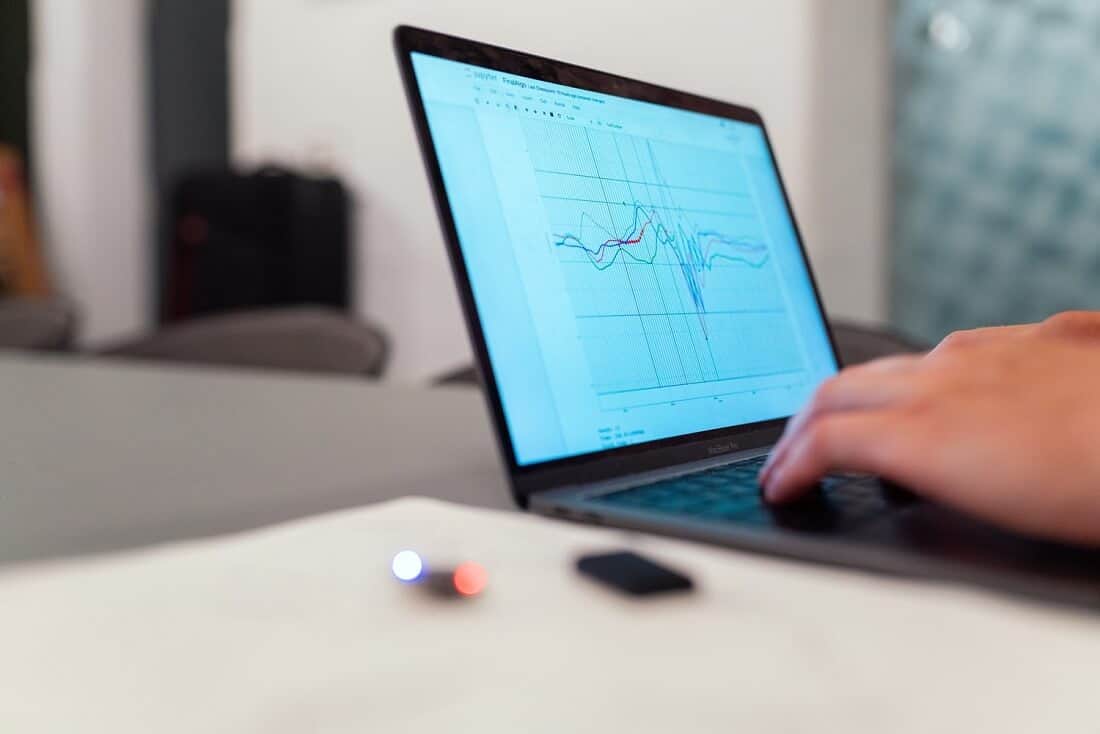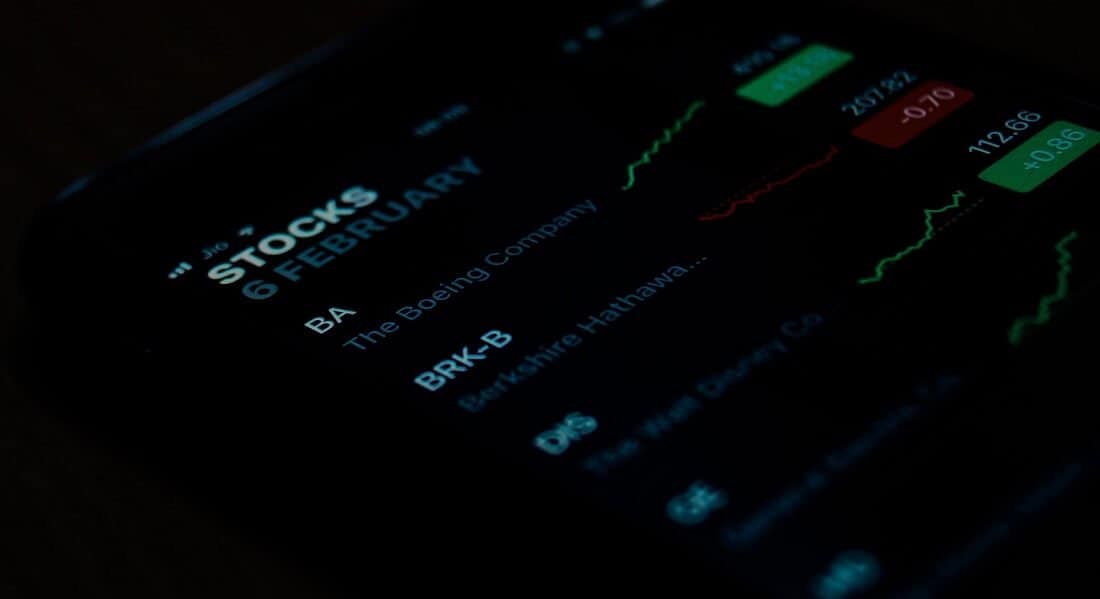
Momentum trading is particularly successful in volatile markets. The main rule is “buy high and sell higher.”
To understand what is momentum trading you’ll need to know that this strategy is based on the recent strength of stock price. Traders that practice this trading strategy believe the price of an asset will continue to move in the same direction if there is enough force to push it higher.
Momentum trading is an aggressive approach to trading. You have to know that before even trying to fully understand what momentum trading is.
The simple answer to the question: What is momentum trading also can be: It is a simple buying and selling of stocks, for example, based on the recent strength of price trends. We mentioned the force behind the stock price, so let’s explain it more detailed.
When the stock goes up and as it reaches the higher price, more and more traders are interested to buy. Their interest is driving the stock price higher and higher. That is the so-called relation between demand and supply. As the number of stocks is the same, meaning the supply is the same, the contest among the traders will increase the stock price. And this price growth will continue with the increasing number of buying in the market. But at some point, some of them will start to evaluate if the stock is worth enough to be sold. If there are enough sellers of that stock, the momentum will change the direction and the stock will go down in price.
What is the momentum trading here?
Momentum trading occurs when traders open their positions after they notice there is a strong trend in stock price. They will close their positions when the trend begins to lose strength. Momentum traders don’t need to wait until the trend hits the top or bottom. Their focus is usually the middle range of the price move which presents the main action in the stock price. This range shows the strong buyers sentiment, everyone would like to buy such a stock that has an upward trend. So, what momentum traders do? They are starting to sell the stock at a higher price.
In other words, momentum traders will attempt to recognize how strong the trend is in a particular direction. Then, they will open their positions to take benefit of the predicted trend development while the stock price is low enough and close their positions when the trend begins to lose strength but the price is high enough to provide them a profit. Momentum traders intend to use the tendency of other traders to follow the majority and profit from that.
The principle behind momentum trading is “buy high, sell higher.” So momentum traders will keep winning players among bought stocks but they will sell the stocks that are not. The money earned will be used to buy more stocks that were doing well.
The essence of momentum trading is to sell the stocks that are dropping but not too much. Previously, the traders must have a confirmation that the change in stock price is real and that will continue in the direction. So the trend must be confirmed.
What is momentum trading else? It is an excellent strategy with great results in volatile markets where quick access is important. When it is done correctly, momentum trading could provide potentially large profits. This trading strategy requires an outstanding and quick process of decision making and that’s why this approach can provide traders more profits than some other strategy for the same time spent.
Risks of this trading strategy
Momentum trading is risky without a doubt and this can be one of the answers on the question of what is momentum trading. But if traders are careful and monitor the market and trends closely, they’ll be ready to buy and sell the stocks on time. It is very important to notice the main change in trend. If the traders miss them, they may suffer big losses. Entry points and exit points or profit targets are extremely important.
Momentum traders have to recognize the point when to enter and close their trades, the level where to exit the trade. It is also important to recognize the proper time when to take any action. For example, if the trader closes the declining stock sales in time such will end up with the profit. But if the trader fails to close the sale quickly such a trader will end up in great losses caused by the stock’s decline in value.
It is very important to notice the stock’s sharp drop in price, sell the stock on time, and avoid a dangerous influence on capital involved in the trade. So, the timing is extremely important in momentum trading. The trader has to be absolutely sure that stock is starting to decline and enter the position promptly to sell it. Otherwise, it can be almost impossible to sell it.
And to answer the question of what is momentum trading. Momentum trading is set to be a remarkably prosperous strategy but has to be performed perfectly.
How to start momentum trading?
Identify the stock you are interested in, choose your momentum trading strategy, but first test it on some demo account. But keep in mind several things.
As we mentioned above, the volume is crucial to momentum traders, because they have to enter and exit positions promptly. That means there are enough sellers and buyers in the market and the good volume shows the stock market is liquid. Volume is the number of stocks traded in the market, it isn’t the number of all transactions.
Momentum traders seek volatility because the high volatility provides big swings in stock prices. That is an advantage for momentum traders, these short-term increases and decreases in stock’s value give the traders a chance to profit. Of course, only if they have a good risk management strategy as protection. That means they have to set stop-loss and limit orders.
As we said, time is important. This strategy is adjusted for short-term market movements, but if the trend keeps its strength longer this strategy is useful for position trading too.
Momentum trading in the stock markets
To be successful in momentum trading in stocks you’ll have to follow some rules. You’ll need the protection against big losses. So, you’ll need to trail the stop-loss, that will provide you to ride the trend. Set your rules for classifying the stocks to know which stocks to buy. Buy stocks on the uptrend market.
For example, if some stock reaches a 50-week high you should go long. If there are many stocks of that kind, make a selection of best 15 or 20 with the biggest raise during the last 50 weeks. Set a trailing stop-loss at a minimum of 20%. Never trade more than 20 stocks at the same time and distribute 5% of capital to each of them. The saying “never put all eggs in the one basket” is relevant to the momentum trading also.
Momentum traders are focused on price action and rely on technical analysis and indicators because they need to decide when to enter and exit each trade, as we described above. Favorite momentum indicators among traders are RSI (the relative strength index), the stochastic oscillator, moving average. Of course, you can use any other technical indicator but these are the most popular.
Bottom line
To be able to understand what is momentum trading you’ll need to have severe risk management. The stock market is volatile and momentum traders need to notice price fluctuations and price pitfalls in the market.
Don’t neglect the basic elements that could lead to price changes. Sometimes it is better not to think about the next big rally. Think about profit. It might come even if there is no big rally.
Carefully pick the stocks to trade, set stop-loss levels, place your entry at the right time, systematically monitor the market to notice possible changes, plan, and set your exits.
Use protective rules for every trade. Momentum traders will set stop losses to protect their trades from unexpected price reversals. There is no other way to be a successful momentum trader. We hope you have a more clear picture of what is momentum trading.







